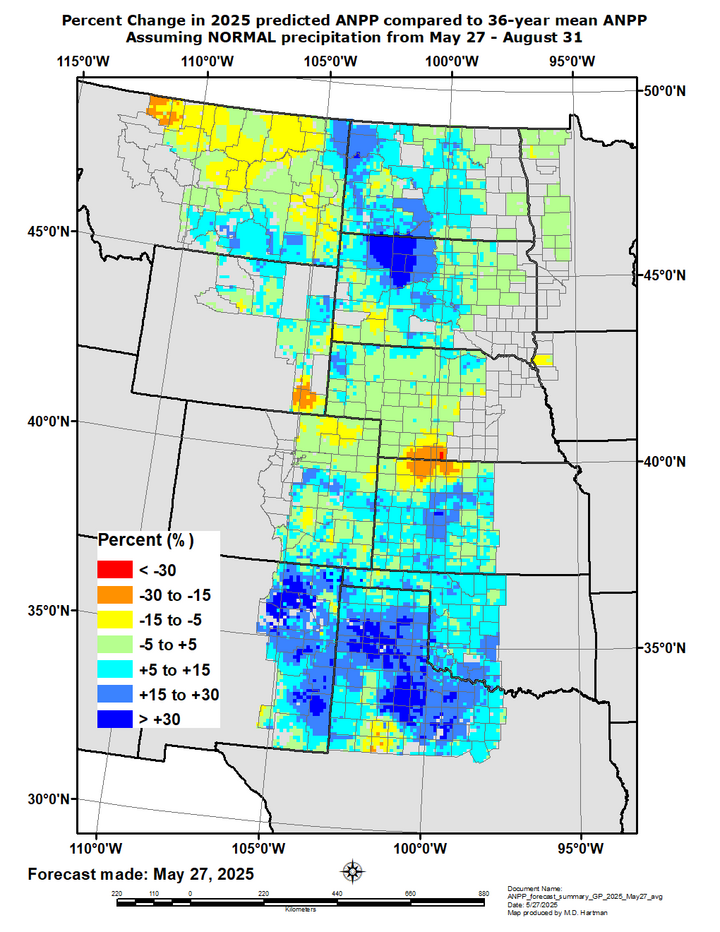While areas across Nebraska have received some precipitation, much of the state remains in moderate to extreme drought. Following recommended trigger dates for necessary management changes, now is the time assess current precipitation accumulation, cool-season forage growth, and seasonal forecasts.
Season-long forecasts from the National Weather Service Climate Prediction Center (CPC) predict a high likelihood that June through August will be warmer and drier than normal conditions. Using Grass Cast, a grassland productivity forecast, annual net primary productivity estimates for above normal, normal, and below normal precipitation scenarios can be compared. Using tools such as Grass Cast, hard numbers can be put to drought management decisions. Considering the CPC prediction of a warmer and drier growing season, the below normal precipitation scenario seems most likely.
As of now, if normal moisture is received for the growing season most of the Sandhills and panhandle, there will be +5% to -5% of the long-term average annual net primary productivity (Fig. 1). If less than normal precipitation throughout the growing season, much of the state will experience annual net primary productivity ranging from -5% to -30% less than the long-term average (Fig. 2). A small section of Southern Nebraska is predicted to have -5% to -30% of the long-term average ANPP under normal precipitation scenarios and -15% to less than -30% of the long-term average ANPP (Fig. 1 & 2).


Stocking rates can be adjusted to match forage production this growing season by normal forage production and stocking rates during normal years compared to the expected forage production. If we put this into practice, we can start planning for a 5-30% reduction in forage production.
- First, plan culling strategies around the expected decrease in production, which may reduce stocking rates enough to match the forecasted forage productivity.
- If not, other strategies like supplemental feeding, limiting animals to a sacrifice area, early weaning, or removing animals from pasture may be needed.
Matching forage consumption to forage production is essential to maintain healthy rangelands and prevent overgrazing. When providing supplemental feed to animals on pasture, additional feed needs to reduce grazing intake. Grass Cast may be used as a tool in these circumstances to estimate how much additional feed will be needed by looking at the difference in production expected.

Resources:
Grass Cast: https://grasscast.unl.edu/
CPC Three Month Forecast: https://www.cpc.ncep.noaa.gov/products/predictions/90day/
Interviews with the authors of BeefWatch newsletter articles become available throughout the month of publication and are accessible at https://go.unl.edu/podcast.
Topics covered:
Pasture & range, Grazing systems & best practices, Weather, Drought

